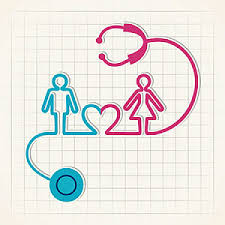
Men’s vs. Women’s Health: What You’re Not Being Told
When it comes to health, men and women are often lumped together, treated as if one-size-fits-all advice applies equally to both. But the truth is—men’s and women’s bodies are profoundly different, from hormones and metabolism to symptoms and risks for diseases. Unfortunately, many of these differences remain under-discussed or misunderstood, even in mainstream medicine.
Here’s what you’re not being told about men’s vs. women’s health—and why knowing the facts can empower you to take better care of your body, no matter your gender.
Biological Differences That Matter
Hormones: The Game Changer
Men and women have different dominant hormones—testosterone in men and estrogen and progesterone in women. These hormones influence everything from muscle mass and fat distribution to mood and immune function.
-
Women’s hormone levels fluctuate monthly, affecting energy, appetite, and even pain sensitivity.
-
Men’s testosterone declines gradually with age, impacting muscle strength, libido, and mood.
Disease Risks Don’t Play Fair
Some health conditions affect men and women differently—not just in how often they occur but how they present and progress.
Heart Disease
-
Leading cause of death for both sexes, but men tend to develop it earlier.
-
Women often have subtler symptoms (like nausea or fatigue) instead of classic chest pain, leading to misdiagnosis.
Autoimmune Disorders
-
Women are 2–3 times more likely to develop autoimmune diseases like lupus and multiple sclerosis.
-
Men generally have fewer autoimmune conditions but often experience more severe symptoms when affected.
Mental Health
-
Women report higher rates of anxiety and depression, influenced partly by hormonal cycles.
-
Men have higher suicide rates, often linked to social stigma around expressing emotions and seeking help.
The Gender Gap in Medical Research
For decades, most clinical trials were conducted predominantly on men, leaving a gap in understanding how diseases and treatments affect women.
-
Medications can metabolize differently in women, altering effectiveness and side effects.
-
Women’s symptoms, especially for heart attacks or strokes, are under-recognized.
-
This research gap delays accurate diagnosis and tailored treatment.
Why Preventive Care Should Be Gender-Specific
Men and women need different screening schedules and health checkups:
-
Women: Regular pelvic exams, mammograms, and bone density tests are vital.
-
Men: Prostate screenings and cardiovascular checks should be prioritized.
Both sexes benefit from routine blood work to monitor cholesterol, blood sugar, and hormone levels, but interpreting these results often requires gender-specific insight.
Lifestyle and Health: Different Needs
Men and women respond differently to diet, exercise, and stress management.
-
Women may benefit more from weight-bearing exercises to combat osteoporosis risk.
-
Men might focus on cardiovascular fitness to reduce earlier heart disease risk.
-
Stress impacts hormone balance in women more dramatically, making mindfulness and sleep critical.
What Can You Do?
-
Know your risks: Learn what conditions are more common or serious in your gender.
-
Listen to your body: Don’t ignore symptoms that feel “off,” even if they don’t match classic signs.
-
Advocate for yourself: Ask healthcare providers about gender-specific screenings and treatment options.
-
Stay informed: Follow new research that highlights gender differences in health.
Final Thoughts
Men’s and women’s health aren’t just two sides of the same coin—they require distinct approaches grounded in biology, lifestyle, and medical science. Ignoring these differences can lead to missed diagnoses, ineffective treatments, and poorer outcomes.
The good news? Awareness is growing, and healthcare is becoming more personalized. Whether you’re a man or a woman, understanding these hidden truths is your first step toward better health and a stronger, longer life.
Because when it comes to your health, one size definitely does NOT fit all.
